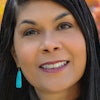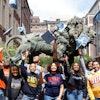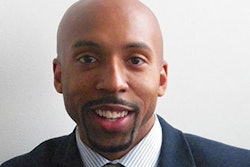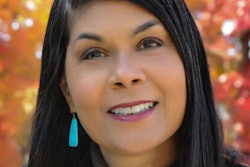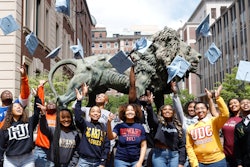 Dr. Alex Red Corn
Dr. Alex Red Corn
I could not agree more. Pernicious, indeed. This word captures the essence of what historically marginalized peoples must continually confront while asserting our right to exist in this Eurocentric dominated world.
Indigenous peoples of the U.S., and worldwide, have a complicated relationship with institutions of education. While Indigenous peoples had systems of education before Europeans ever arrived on the shores of the Americas, this all changed when Native nations experienced forced removals while Euromericans pursued goals of conquest, westward expansion, and manifest destiny. During this time, Euromericans used education as weapons against American Indians. Our ancestors were put into boarding schools where they were not allowed to speak their language or live their traditions. Instead, they were forced to learn English, and adopt Eurocentric agriculture practices and industrial skills. But the story goes much deeper, and the original assimilationist trajectory endures.
Institutions of higher education, specifically land grant/grab institutions, were established as part of these efforts in conquest. As thoroughly documented by High Country News, forced land dispossessions serve as the foundation for institutions of higher education in the U.S. My own institution, Kansas State University, used land entirely from the Kaw (Kanza or Kaáⁿze) Nation to serve as its financial foundation, and ironically, we carry their name in our institutional branding (Kanza is the inspiration for Kansas). This land was acquired through the Morrill Act, all while the Kaw people were being removed to Oklahoma. Yet, today Kaw citizens from Oklahoma must pay out-of-state tuition to attend our university. Even if they were to attend, we do not offer any courses on Kaw language, government, or history. If we endeavored to partner with the Kaw Nation on any grants for the purposes of collaboration, we often have administrative fees that take money that could be going to the Kaw Nation but goes toward our administrative infrastructure — the same administrative infrastructure founded using land dispossessed from the Kaw people.
While there is a strong network of tribal colleges and universities that serve Indian Country in more culturally responsive ways, Native nations still depend heavily on state-run institutions to prepare their students for the world. Even outside of the land grant system — all institutions of higher education in the U.S. are on Native land, and tax revenues from that land are feeding our state and local systems of education.
At K-State, we’re working to establish and institutionalize events such as our Indigenous Peoples Day gathering and move beyond “drum and feather” contexts while keeping focus on substantive content related to issues and topics found across Indian Country. Campus powwows and cultural exhibitions are still a good thing, but we are also aware of how quickly a token Indian dressed in traditional clothes becomes a diversity picture on a website for branding purposes, while an institution can overlook the other substantive parts of our modern existence. Such endeavors include asserting sovereignty, ongoing survival and adaption, creative and artistic expression, innovative leadership and program building, cutting-edge scholarship, tribal enterprise, legal advocacy, and so much more.
At K-State, we also helped revive the Kansas Association for Native American Education which now connects Indian education leaders from across the state in productive ways. We awarded an Osage elder and language revitalization leader (Herman Mongrain Lookout) an honorary doctorate and started a partnership with the Citizen Band Potawatomi’s to offer Potawatomi language courses. We built new graduate programs specifically for educational leadership training in Indian Country and have engaged in multiple collaborations with Native Nations in the region.
Just as our ancestors have always done, we are persistent in asserting our rights to exist as a people. Our persistence must triumph the pernicious status quos we are constantly enduring, because our future depends on it. So we press on.
Dr. Alex Red Corn is a citizen of the Osage Nation, where he is a member of the Tsi.zhu.wah.shtah.geh (Gentle Sky/Peacekeeper) clan, with family roots in the Wa.ha.xolin district near Pawhuska, Oklahoma (USA). In the College of Education at Kansas State University, he serves as an Assistant Professor of Educational Leadership, Coordinator of Indigenous Partnerships, Co-Chair of the Indigenous Faculty and Staff Alliance, Executive Director of the Kansas Association for Native American Education (KANAE) and Program Coordinator for the Indigenous Educational Leadership Graduate Certificate. In 2022, Dr. Red Corn also become the Chair of the new Kansas Advisory Council for Indigenous Education Working Group (KACIE-WG).
The Roueche Center Forum is co-edited by Drs. John E. Roueche and Margaretta B. Mathis of the John E. Roueche Center for Community College Leadership, Department of Educational Leadership, College of Education, Kansas State University.




